Anyone working with Schubert’s autographs inevitably runs up sooner or later against the famous accent question: that is, more precisely, the question of whether the sign notated at this or that passage means an accent or a decrescendo hairpin. Although both signs in modern music notation are very clearly distinguished one from the other – an accent is placed directly above the note head, the hairpin below or above the stave –, they are closely related in origin. When in the expiring 18th century the signs for getting louder or softer (crescendo and decrescendo hairpins) arose as alternatives or substitutes for the written-out directives crescendo and decrescendo, the > sign evolved as an abbreviated decrescendo hairpin. The correlation becomes graphic for instance in Beethoven’s songs.
The first example showing an accent for the word “Herz” actually presents an extremely abbreviated decrescendo hairpin at the next note, as can be deduced from the parallel hairpin in the piano:
At another place there is an accent, completely clear in the modern sense, where Beethoven notates the > sign for the vocal part, but the typical sfp for the piano:
Whilst both signs can in general be clearly distinguished from each other, Schubert’s specific way of notating involves problems. For representing accentuation he also uses the abbreviations sf, fz, ffz, sfp or fp, though increasingly also the accent sign >. Usage of abbreviations and symbols is mostly as synonyms; combinations appear reinforcing (for example, fp with >) or even redundant (fz with >). Schubert, unlike Beethoven, Mendelssohn or Schumann, does not, however, place the > consistently at the note head or above the note, but wherever space is available below or above the stave, which very much complicates distinguishing it from the hairpin dynamic signs that he proceeds with all the same.
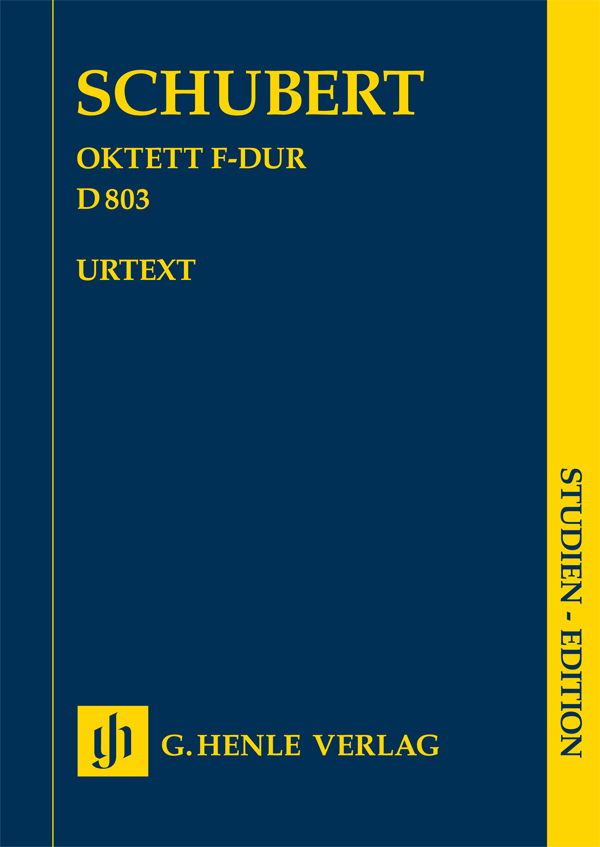 The new edition recently published by Henle publishers of the famous Octet D 803 from 1824 (HN 9562; HN 562) offers the opportunity to play new variations, so to speak, on this old theme, for accents and dynamic signs in literally lavish abundance are to be found in the Octet. The complete autograph preserved today in the Wienbibliothek (formerly Stadt- und Landesbibliothek in Vienna), from which the subsequent examples are taken, can be viewed online. For easier orientation: Schubert notates the instruments in the order of high strings – winds – low strings, thus: (1) violin I, (2) violin II, (3) viola, (4) clarinet, (5) bassoon, (6) horn, (7) cello and (8) double bass.
The new edition recently published by Henle publishers of the famous Octet D 803 from 1824 (HN 9562; HN 562) offers the opportunity to play new variations, so to speak, on this old theme, for accents and dynamic signs in literally lavish abundance are to be found in the Octet. The complete autograph preserved today in the Wienbibliothek (formerly Stadt- und Landesbibliothek in Vienna), from which the subsequent examples are taken, can be viewed online. For easier orientation: Schubert notates the instruments in the order of high strings – winds – low strings, thus: (1) violin I, (2) violin II, (3) viola, (4) clarinet, (5) bassoon, (6) horn, (7) cello and (8) double bass.
Ideally, the accent in Schubert differs from the decrescendo hairpin in length as well as also direction. Accents are shorter and tend upwards like arrows pointed towards the notes or the note heads. This can be very nicely observed in the first example in the clarinet part (4th stave) where accents (m. 16) and decrescendo hairpin (m. 17) follow each other. That a decrescendo hairpin is meant in measure 17 also further emerges from the identical sign notated for the horn (6th stave), correspondingly preceded by a crescendo hairpin:
But all passages are, unfortunately, not so clearly configured; in particular, the two formal attribution criteria – length and direction – are not in effect everywhere. We find just two pages later in the autograph a sign in violin I (stave 1, m. 33) and in the clarinet (stave 4, m. 33) that has to be a decrescendo according to length and direction (see also the difference from the accents, m. 32). The context, though, leaves this interpretation in some doubt. Between the accents in m. 32 Schubert notated a cresc. for violin I, that is, the p at the start is a “subito p”, for which the accent is essentially more applicable than a subsequent decrescendo. The notated p thus corresponds to the fp in the same measure in the clarinet part – and the combination of fp and > is frequently encountered in Schubert. In this sense a case can probably be made for placing accents here in the edition – but the passage is far from being beyond doubt.
One final example, this time concerning the end of the 3rd movement. Beginning with pp we encounter a cresc. directive at measures 191/192, leading to p in measures 194/195. The rise in dynamics in measures 192/193 is then once again differentiated through crescendo and decrescendo hairpins. This means that within a dynamic increase there is a temporary decrease (which is repeated at a later passage). Notated are cresc. and hairpins only for violin I (1st stave), clarinet (4th stave) and cello (7th stave), yet of course these ought to be in force for all instruments. But confusing now is the effect of the isolated sign for the horn (6th stave) in m. 193 that from its length and direction would have to be a valid accent. Should Schubert have given the horn here an additional accent for reasons of sonority? Not entirely out of the question, but rather more suggesting from the whole context – violin and horn are indeed running parallel – that it is a mistake.
Hence the passage is reproduced in the edition as follows:
The few examples show that length and direction alone are not enough for interpreting the > sign, but also, unfortunately, the musical context does not always lead to the desired clarity.
Ideas on this old subject are therefore very welcome from your side!

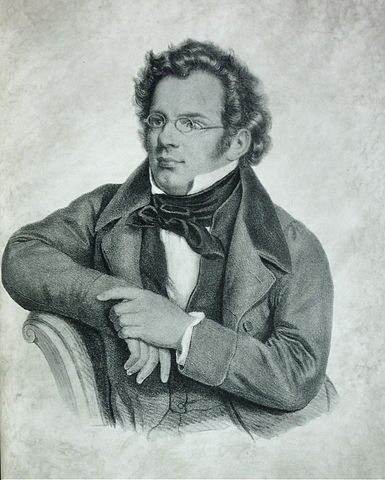

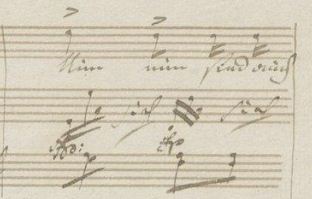
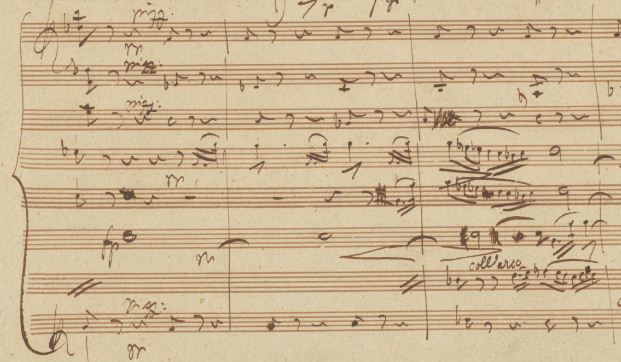
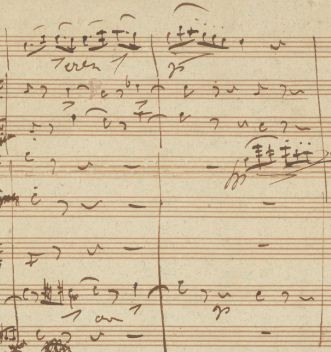
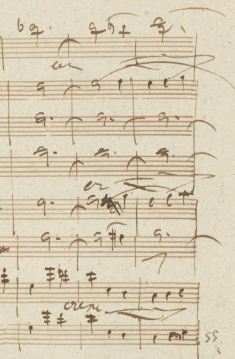

In my view, the “accent” in Schubert (and probably in other composers) is not to be thought of as an “accent” in the usual modern sense: a definite and rather pronounced or even sharp increase of volume on a note. Rather, Schubert’s “accent” is a note “heightener” or “enhancer,” indicating that the note is important or expressive (often just the gentlest “push” or leaning on needed), and, often, needs a bit of time. The time aspect in particular is very common, and this is why it wasn’t redundant for Schubert to write “>” and fp or sf on the same note. Thus for example the “accents” for the horn at the beginning of the “Great” C Maj. symphony are the gentlest of stresses, and indicating that the notes should be held at least full value and perhaps even a bit longer
Thank you very much for this inspiring comment, Mr. Shapiro.
I was just told that an article was recently published in the German Review “Tibia” (no. 3/2014, pp. 162 ff.) by Prof. Dr. Peter Thalheimer: “Wechselwirkungen zwischen Dynamik, Vibrato, Agogik und Espressivo, betrachtet an Beispielen aus der Flötenmusik des 19. und frühen 20. Jahrhunderts”, which interprets the “accent” in Schubert’s Music in a similar manner.
Peter Jost